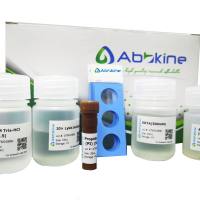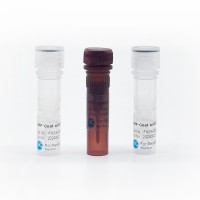Premature Chromosome Condensation in Human Resting Peripheral Blood Lymphocytes for Chromosome Aberration Analysis Using Specific Whole-Chromosome DNA
互联网
398
This paper describes a unique, simple, and rapid method for inducing premature chromosome condensation (PCC) in “resting” human peripheral blood lymphocytes (HPBLs) and also explains an approach to studying numerical changes and/or structural aberrations involving specific chromosomes. HPBLs are isolated from whole blood on a density gradient and, to induce PCC, are incubated at 37�C in cell culture medium supplemented with a phosphatase inhibitor (okadaic acid or calyculin A), adenosine triphosphate (ATP), and p34cdc2 /cyclin B kinase (an essential component of mitosis-promoting factor [MPF]). PCC spreads are prepared on glass slides after a brief hypotonic treatment of cells and fixing in acetic acid/methanol fixative. Aberrations involving specific chromosomes are analyzed after in situ hybridization and chromosome painting by fluorescence microscopy. Normal (undamaged) cells display two fluorescent spots per chromosome, whereas aneuploid cells, or cells with a structural aberration involving the specific chromosome corresponding to the painting probe, may show more than two spots. This method may be used in many biological and toxicological fields that require analysis of numerical and structural aberrations involving specific chromosomes.









